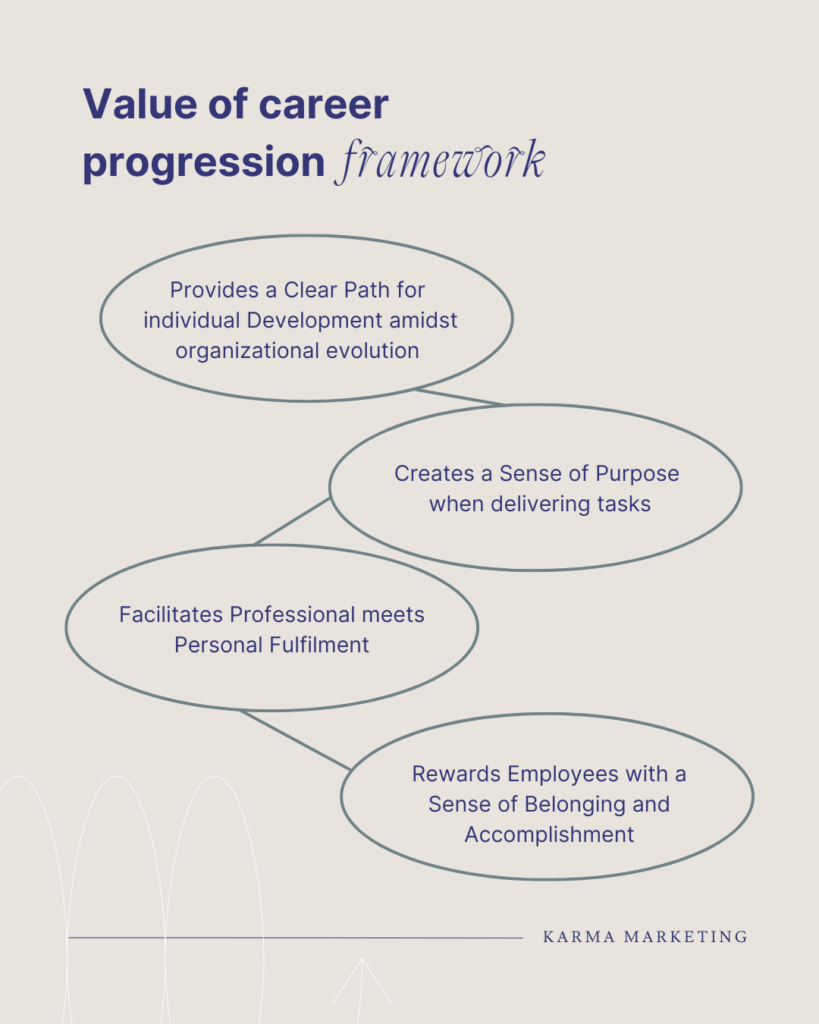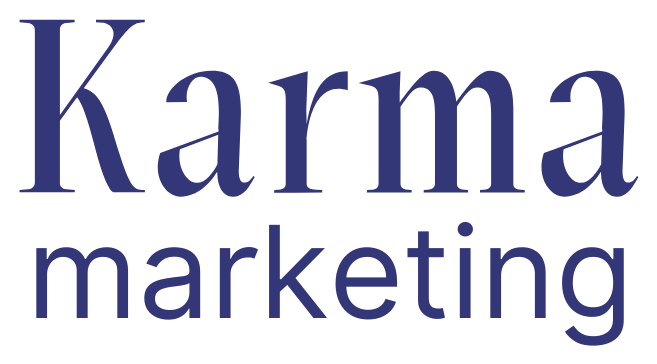Discover a Practical Framework to Advance Your Career and Address Your Personal and Professional Development Needs
As humans, we all yearn for a sense of purpose and fulfillment in our lives, and our careers play a significant role in achieving that. We believe that personal growth and work-life balance go hand in hand, and creating a career plan that aligns with your values and goals is crucial to achieving holistic growth. In this article, we explore the importance of career progression frameworks and how they can help us achieve both personal and professional fulfillment, ultimately leading to a happier and healthier life.
A career progression framework is a structured way for employees to understand how they can advance in their careers within an organization. It outlines the different stages or levels of a particular job or role and the skills, knowledge, and experience required to move from one level to the next.
Essentially, it’s a roadmap that helps employees understand what they need to do to progress within their job and reach their career goals. By defining the skills and knowledge needed to move up the ladder, the framework can help employees identify areas for growth and development, and set goals for themselves.
There are several reasons why implementing a career progression framework can be beneficial for a company.
- Provides a Clear Path for Development Within The Company
First of all, it can help increase employee engagement and retention by providing a clear path for growth and development within the company. Such a framework can enhance employee development by providing tools and resources for new skill development, ultimately improving employee performance and helping them achieve their career goals. Overall, these benefits can create a more engaged, skilled, and productive workforce, leading to improved organizational performance and a stronger bottom line.
- Creates a Sense of Purpose
Additionally, a career progression framework helps to create a sense of purpose by providing us with a clear understanding of their roles and responsibilities within the organization. This, in turn, helps to build a sense of camaraderie and fosters a positive work culture. Ultimately, achieving holistic growth through a career progression framework requires us to take an active role in our own career development.
- Ensures Professional & Personal Fulfillment
Finding meaning and purpose in one’s work is essential for achieving a sense of fulfillment and satisfaction in one’s career. A career plan can help us identify their values, interests, and strengths, and use this information to create a career path that aligns with their passions and goals. Moreover, a career plan can help us develop the skills and knowledge we need to excel in our chosen field, which means it creates opportunities for career advancement and growth.
- Rewards Employees with a Sense of Accomplishment
Recognizing achievements and celebrating milestones is important for us to feel valued and appreciated in our careers. Career progression frameworks can help to provide a clear path and goals to work towards, making it easier for us to track their progress and accomplishments. Celebrating milestones along the way, such as completing a training program or receiving a promotion, can be a great way to boost motivation and create a sense of pride in one’s work.

Creating a Career Progression Framework: A Step-by-Step Guide
To create a career progression framework, a company will typically need to define the following:
Step 1: Define Each Job Title in Each Level
The first step in creating a career progression framework is to define each of the job titles based on the organizational structure of your company. By doing this, you and your employees can better identify the various positions and responsibilities that exist within your company. It is important for employees to have a clear understanding of the potential career paths available to them within a company, including their future roles, responsibilities, and the necessary steps to progress, regardless of their current position, whether it be as an intern, junior staff, or manager.
Step 2: Organize Roles into Clear and Progressive Career Paths
Once you have identified the various roles within your organization, the next step is to organize them into clear and progressive career paths. This involves assigning each employee to the path based on the hierarchy of roles, from the most junior to the most senior. For example, you might have a career path that starts with Sales Representative and progresses to Senior Sales Representative, Sales Manager, and ultimately, Sales Director.
Step 3: Define Criteria for Advancement
Finally, you need to define the criteria for advancement. This involves identifying the skills, knowledge, and achievements that are necessary for an employee to move to the next level in their career path. For example, an employee may need to demonstrate mastery of certain skills and a certain level of education, complete a set of training programs, a minimum number of years in the company, or achieve specific performance metrics.
Once you have completed these steps, you can create a career progression framework that outlines the job positions, responsibilities, required skills, and criteria for advancement. This framework can be presented in a table format, making it easy for employees to understand their career paths and what they need to do to advance. Here’s an example of what it could look like:
Personalizing your Career Progression Framework
While career progression frameworks are often used by organizations to provide a structured path for employees, they can also be useful for personal use. Creating your own personal career progression framework can help you identify your career goals, define the skills and experience you need to achieve those goals, and map out a plan for professional development. It can also help you track your progress and make adjustments as you gain new skills or encounter new opportunities.

To put it in simple terms, the 3 things you need to consider when creating a personal career progression framework are your passion, your competence, and what the company needs. The true meaning of professional alignment is to reach fulfillment through professional growth. The Venn diagram below will help you get a sense of what it means to reach fulfillment in your career journey:
Misalignment: when you are competent and passionate about something that your company doesn’t need. This feeling is common around people that are currently in a career path or a job position that they didn’t plan on pursuing. This could result in disengagement and a lack of fulfillment in daily work. In this situation, it may be beneficial for you to explore other opportunities beyond your current profession. Another solution would be to ask your company whether there are ways to better utilize your skills and passions.
Dissatisfaction: when you are competent at what your company needs, but you are not passionate about it. People in this position may be able to perform the tasks required of them, but they may not find the work fulfilling or enjoyable. This can lead to a lack of motivation, a decrease in productivity, and an overall sense of dissatisfaction with their career. This is why it’s important to assess our personal values and interests when planning our career, as well as considering the needs of our employer, to ensure a good match for both parties.
Ineffective: when you are passionate about what your company needs, but lack the necessary competence or skills. Fortunately, competency is something we can develop over time with intense training and a strong desire to learn. Applying as an intern could be an acceptable solution to this situation. As you gain experience and competence, you will eventually advance in your career, along with achieving a sense of fulfillment.
Once you’ve decided what you’re passionate about and what set of competencies you have, you can start breaking down specific goals you want to achieve in your career. A personal career progression framework can take many different forms, but here’s a simple guide on how you can make a personalized career plan/framework:
- Identify your career goals and objectives.
- Evaluate your current skills and knowledge.
- Identify areas where you need to improve your skills or acquire new skills.
- Determine what qualifications or certifications are required for your desired role.
- Research the job market to identify potential job opportunities and career paths that align with your passion and competence.
- Set short-term and long-term goals for your career development.
- Review and update your career plan regularly to ensure that you are making progress toward your goals.
Remember, achieving holistic growth through career progression frameworks is not just about advancing in your job or earning a higher salary. It’s about finding your true purpose and aligning it with your professional goals. Whether you’re in a profession you’re committed to or still looking for a place you can truly belong, creating your personal career progression framework can help you envision the future in an optimistic way.
By taking the time to create a career plan, you can ensure that you are growing in a way that promotes your overall wellness and fulfillment, both professionally and personally. As the saying goes, “Choose a job you love, and you will never have to work a day in your life.” So take charge of your career and start building your own path towards a more fulfilling and balanced life.
Karma Wisdom: Curated research by Anya Junor | Design by Aulia Monopolie_
